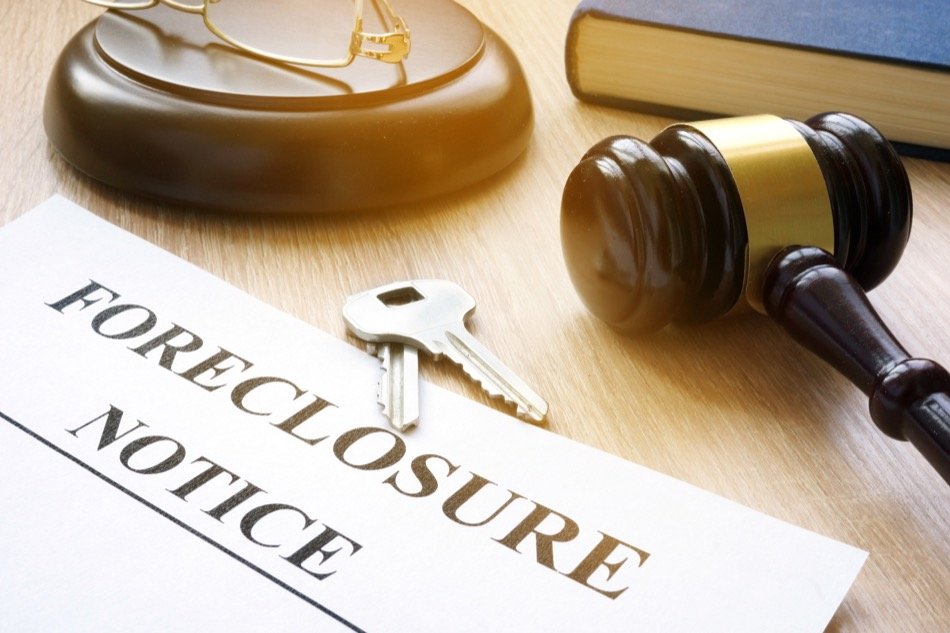Your Foreclosure Process Guide
Posted by Edmonton Homes.ca on Thursday, August 22nd, 2019 at 8:55am.
 No homeowner wants to go into foreclosure on their home. However, even the most well-intentioned homeowner can experience a change in circumstances that makes it hard to meet financial obligations. In some instances, it is possible for a single missed mortgage payment to trigger the foreclosure process. However, Canadian homeowners do have recourse when facing the possibility of foreclosure. Understand more about what the foreclosure process entails in Canada today.
No homeowner wants to go into foreclosure on their home. However, even the most well-intentioned homeowner can experience a change in circumstances that makes it hard to meet financial obligations. In some instances, it is possible for a single missed mortgage payment to trigger the foreclosure process. However, Canadian homeowners do have recourse when facing the possibility of foreclosure. Understand more about what the foreclosure process entails in Canada today.
For informational purposes only. Always consult with an attorney before proceeding with any real estate transaction.
The Foreclosure Process in Canada
A homeowner who has recently received paperwork that the foreclosure process will begin does have options. Some may find that foreclosure may be a practical solution, especially when they have not invested significant equity in a home. Those that have made regular mortgage payments for years often do want to know what the process is like and what, if any, control they have in the process.
Until a mortgage is paid in full, the lender retains rights over the property. When mortgage payments are missed, and a borrower defaults, the mortgagee or lender can then follow through with a legal process wherein they may assume ownership. The lender may want to begin the foreclosure process even when mortgage payments have been made. Until a mortgage is paid off, a lender still retains responsibility over the home. When a borrower does not insure the home, pay associated taxes or fails to repair significant damage, the lender may want to start foreclosing on the property.
Why Foreclosure May Happen
Foreclosure can occur due to a multitude of reasons. Divorce, a medical emergency or a change in employment status can make it hard to keep up with mortgage payments. Rather than go through the foreclosure process, a lender may be willing to work with a homeowner when contacted by a struggling homeowner who needs a different payment arrangement. A borrower's efforts to continue to make payments may help them avoid foreclosure and arrive at more feasible terms with a lender.
The Start of the Foreclosure Process
Most lenders do not want to foreclose on a home, as it can be expensive and time-consuming. Some will send a reminder letter after a missed payment before resorting to a demand letter.
The demand letter alerts the homeowner about the initiation of the foreclosure process. The name of the letter may vary by province or territory. In one scenario, the borrower will learn about how much needs to be paid to reinstate the mortgage or get it back into good standing on the demand letter. In another situation, the borrower may have to pay the entire amount borrowed, in addition to expenses and interest. At this point, a homeowner can quickly stop the process if they can meet the payment expectations. However, not everyone has funds to do so at the time.
Next Stages
Depending on the area, a homeowner may have to deal with either a power of sale or judicial foreclosure. The power of sale often occurs in Labrador, Newfoundland, Prince Edward Island, New Brunswick and Ontario. A homeowner can try to get a loan back into good standing or take out a second mortgage to make up the arrears. When this doesn't occur, the borrower receives a statement of claim. Without a response in 20 days, a default judgment will be awarded with the lender getting a writ of possession.
Those living in other areas such as British Columbia, Quebec, Alberta, Saskatchewan, Manitoba and Nova Scotia may deal with judicial foreclosure. A homeowner received the copy of a statement of claim, filed by the lender. The borrower then gets 20 days to respond. Two choices are available at this time: a statement of defense, or a demand for notice. In order to better understand the options, a Devon homeowner should get guidance from legal counsel. It is best to choose one of the alternatives, as not responding leads to a default judgment, where in the majority of instances homeowners being foreclosed upon lose their home. With a response, a homeowner can get more time to address the issue and potentially stop the foreclosure process, such as with a new first mortgage where debt is consolidated.
Dealing with Foreclosure
Much depends on a borrower's unique situation. Those with no home equity may want to get the process over and done with as quickly and cheaply as possible. In this case, working with a lender may lead to a full release with a lender not expecting any more money from a borrower. In the majority of instances, it is best to respond in a timely fashion to letters as many requests are tied to relatively short timeframes. A lack of response often removes the ability of the homeowner to interfere with, delay or stop the foreclosure process. Getting legal counsel or speaking with a mortgage lender may provide additional information about how the foreclosure process works in a specific province or territory.
For informational purposes only. Always consult with a certified tax expert before proceeding with any real estate transaction.

